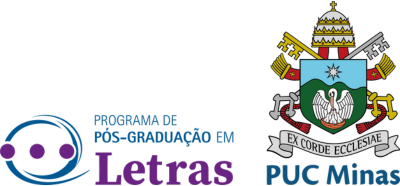Luto:
presença (discurso) ausência (corpo)
DOI:
https://doi.org/10.5752/P.2358-3428.2024v28n63p245-268Palavras-chave:
Corpo, Luto, Análise do discurso, PsicanáliseResumo
Este ensaio tem o intuito de apresentar e refletir questões acerca da morte e do luto na quarta idade, buscando compreender os efeitos de sentidos que ressoam em fotografias que tratam sobre a temática publicadas no Instagram, rede social online. Buscar-se-á, como interesse, realçar a materialidade discursiva do corpo no processo sócio-histórico e ideológico de textualização simbólica sobre a morte e seus efeitos de sentir e de sentidos no espaço digital. Essa construção se dará a partir da relação discursiva possível entre a Análise de Discurso pecheutiana e a Psicanálise. Como efeito de fecho, compreendeu-se que, nas materialidades analisadas, a morte, o luto ou o que foi chamado de presença-ausência do objeto perdido, lança efeitos de sentidos que estão constituídos pela exterioridade - historicidade e interdiscurso -, evidenciando o sentido da falta que se discursiviza nos discursos dos sujeitos que ainda vivem. O corpo que não está mais vivo passa a ser representado pela ausência, ou seja, é retomado pela memória afetiva e discursiva, que resiste/existe discursivamente ao ser simbolizado, desse modo, a presença (discurso)-ausência (corpo) aponta para uma dada relação constitutiva dos sujeitos enlutados, o que move o trabalho da memória, colocando em jogo a historicidade e o interdiscurso, ou seja, a exterioridade. Portanto, os efeitos de sentidos indicam que a presença (discurso)-ausência (corpo) significam, o que abre espaço para o trabalho simbólico que funciona na linguagem das materialidades visuais.
Downloads
Referências
ALTHUSSER, Louis. Freud e Lacan. Marx e Freud. 2. ed. Rio de Janeiro: Ed. Graal, 1985.
BALDINI, Lauro. Sujeito e subjetividade: psicanálise análise de discurso. In: PETRI, Verli; DIAS, Cristiane. (org.). Análise do discurso em perspectiva: teoria, método e análise. Santa Maria: Editora da UFSM, 2013. p. 191-202.
BARROS, Manoel de. Poesia completa. São Paulo: Leya, [1916], 2010.
CLAUSON, Luisa. O que restou. 2020. 1 fotografia. Disponível em: https://www.instagram.com/p/CKzrWD3nunk/ - https://lardalily.com.br/.
DURKERR, Christian Ingo Lenz. Teoria do luto em psicanálise. Revista Pluralidades em Saúde Mental, Curitiba, v. 8, n. 2, p. 28-42, jul./dez. 2019. Disponível em: https://revistapsicofae.fae.edu/psico/article/view/226.
FERNANDES, Carolina. O visível e o invisível da imagem: uma análise discursiva da leitura e da escrita de livros de imagens. Campinas, SP: Mercado de Letras, 2017.
FREUD, Sigmund. A negativa. In: FREUD, Sigmund. O ego e o Id e outros trabalhos 1923-1925: edição standard brasileira das obras psicológicas completas de Sigmund Freud. V. 19. Rio de Janeiro: Imago, [1925] 1980. p. 139-143.
FREUD, Sigmund. Rascunho G: melancolia. In: FREUD, Sigmund. Publicações pré-psicanalíticas e esboços inéditos 1886-1889: edição standard brasileira das obras psicológicas completas de Sigmund Freud. V. 19. Rio de Janeiro: Imago, [1886-1889] 1980. p. 150-154.
LACAN, Jacques. Escritos. Rio de Janeiro: Jorge Zahar Editor, 1998.
LACAN, Jacques. Hamlet por Lacan. Campinas: Escuta/Liubliú, 1986.
LEANDRO-FERREIRA, Maria Cristina. O corpo como materialidade discursiva. Revista eletrônica de estudos do discurso e do corpo, Vitória da Conquista, v. 3, n. 1, p. 77-82, 2013.
Disponível em: https://periodicos2.uesb.br/index.php/redisco/article/view/2697.
NETTO, Matheus Papaléo; KITADAI, Fábio Takashi. Desafios da longevidade: a quarta idade. In: NETTO, Matheus Papaléo; KITADAI, Fábio Takashi. (org.). A quarta idade: o desafio da longevidade. São Paulo: Editora Atheneu, 2015. p. 13-24.
PAPALIA, Diane E.; FELDMAN, Ruth Duskin. Desenvolvimento humano. 12 ed. Porto Alegre: AMGH, 2013.
PÊCHEUX, Michel. O discurso: estrutura ou acontecimento. 5. ed. Campinas: Pontes Editores, [1998] 2008.
PÊCHEUX, Michel. Semântica e discurso: uma crítica à afirmação do óbvio. 2. ed. Campinas, SP: Editora da UNICAMP, [1975] 1995.
PÊCHEUX, Michel; FUCHS, Catherine. A propósito da análise automática do discurso: atualização e perspectivas (1975). In: GADET, Françoise; HAK, Tony. (org.). Por uma análise automática do discurso: uma introdução à obra de Michel Pêcheux. 5. ed. Campinas: Editora da Unicamp, 2014. p. 159-250.
RIBEIRO, Thales de Medeiros; et al. Luto e terror: lado A/lado B. Revista de Letras JUÇARA, Caxias, v. 02, n. 01, p. 332 – 352, jul. 2018. Disponível em: https://ppg.revistas.uema.br/index.php/jucara/article/view/1602.
RIBEIRO, Thales de Medeiros. O luto e a análise do discurso. In: FLORES, Giovanna Benedetto (org.) et al. Discurso, Cultura e Mídia: pesquisas em rede. v. 4. Campinas, SP: Pontes Editores, 2021. p. 225-236.
VENTURA, Sandra. O meu luto. 2019. 1 fotografia. Disponível em: https://www.instagram.com/p/BzJHiGdFB3h/.
Downloads
Publicado
Como Citar
Edição
Seção
Licença
O envio de qualquer colaboração implica, automaticamente, a cessão integral dos direitos autorais à PUC Minas. Solicita-se aos autores assegurarem:
- a inexistência de conflito de interesses (relações entre autores, empresas/instituições ou indivíduos com interesse no tema abordado pelo artigo), e
- órgãos ou instituições financiadoras da pesquisa que deu origem ao artigo.
- todos os trabalhos submetidos estarão automaticamente inscritos sob uma licença creative commons do tipo "by-nc-nd/4.0".









